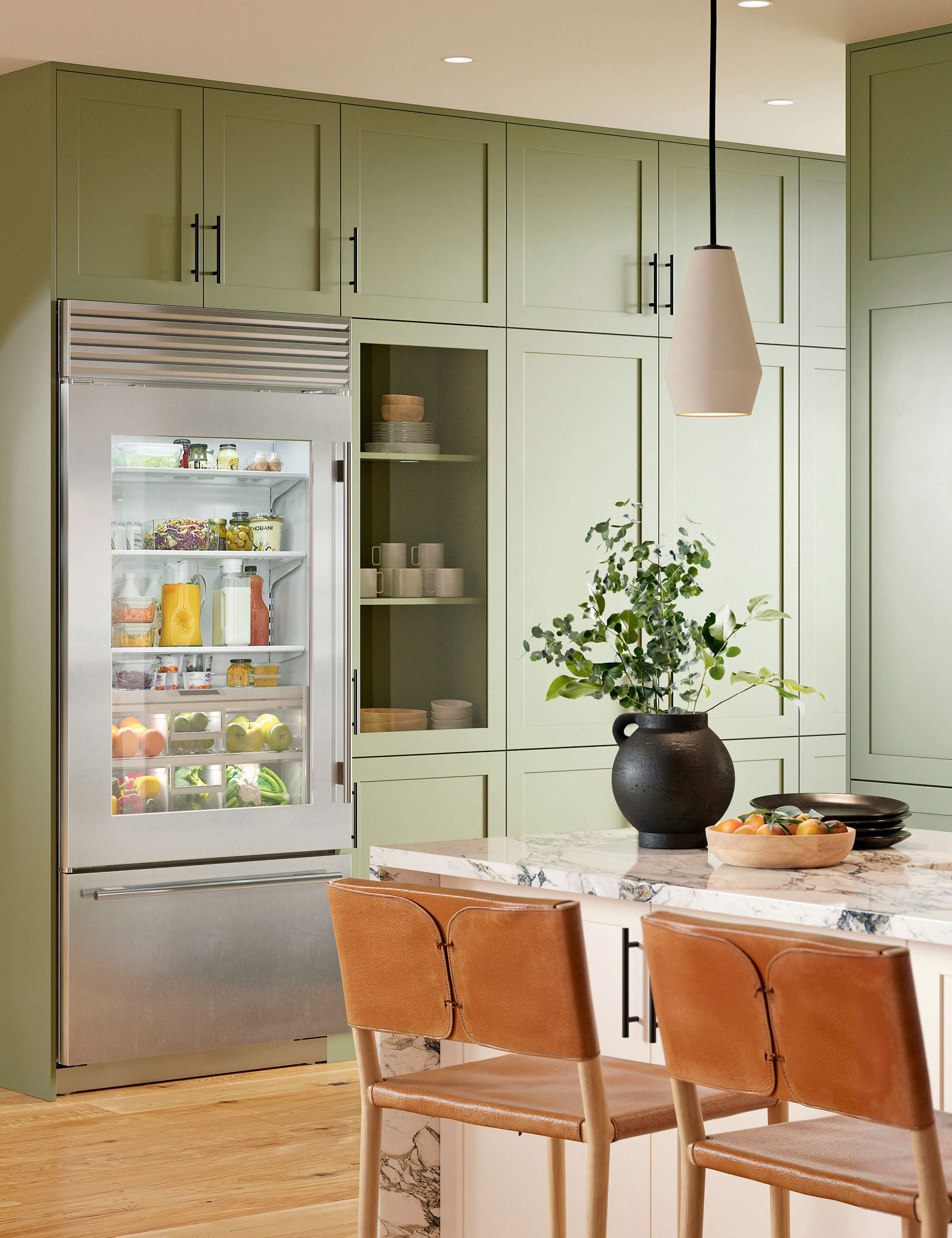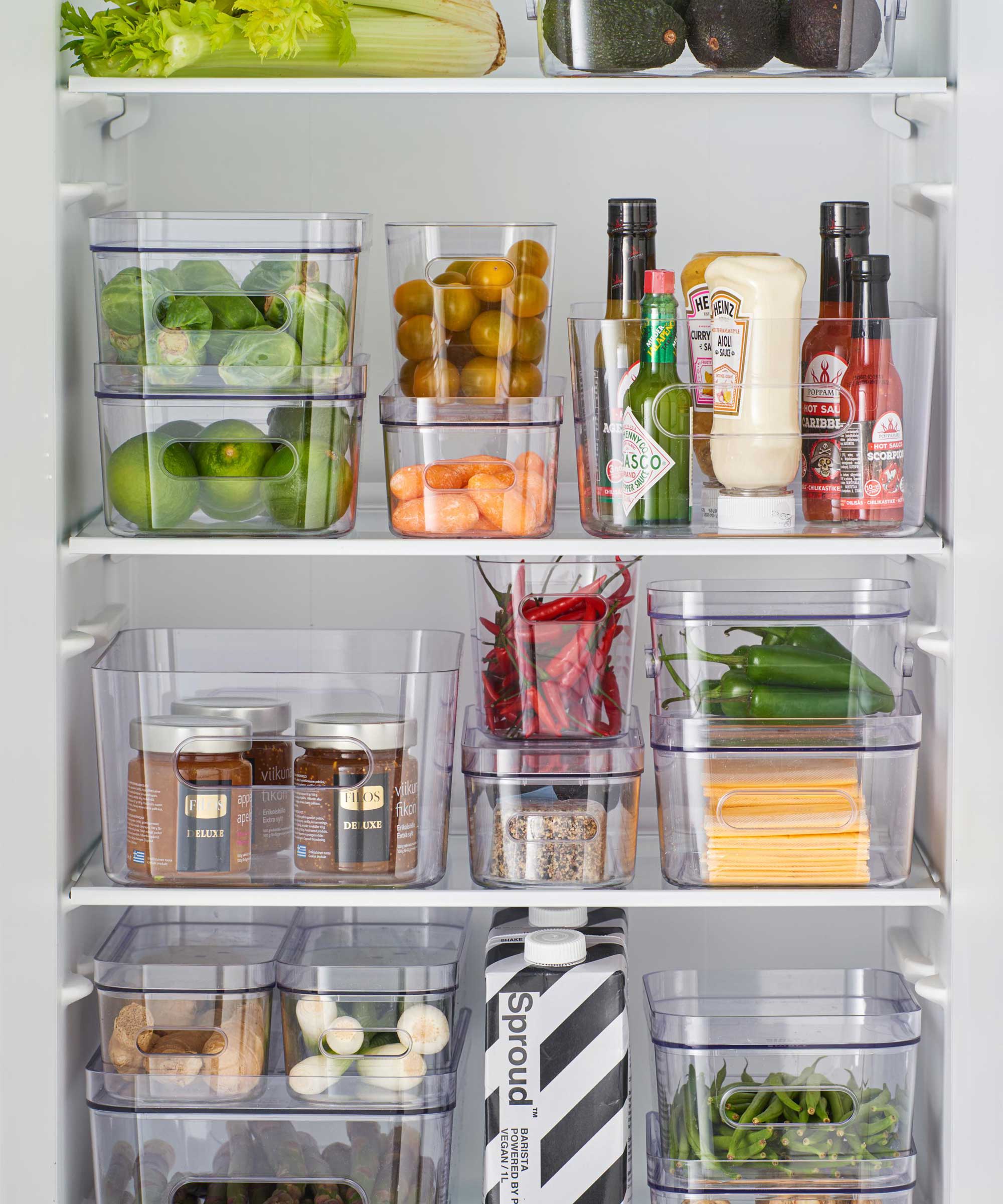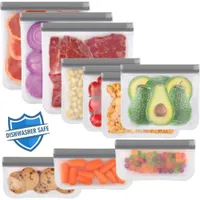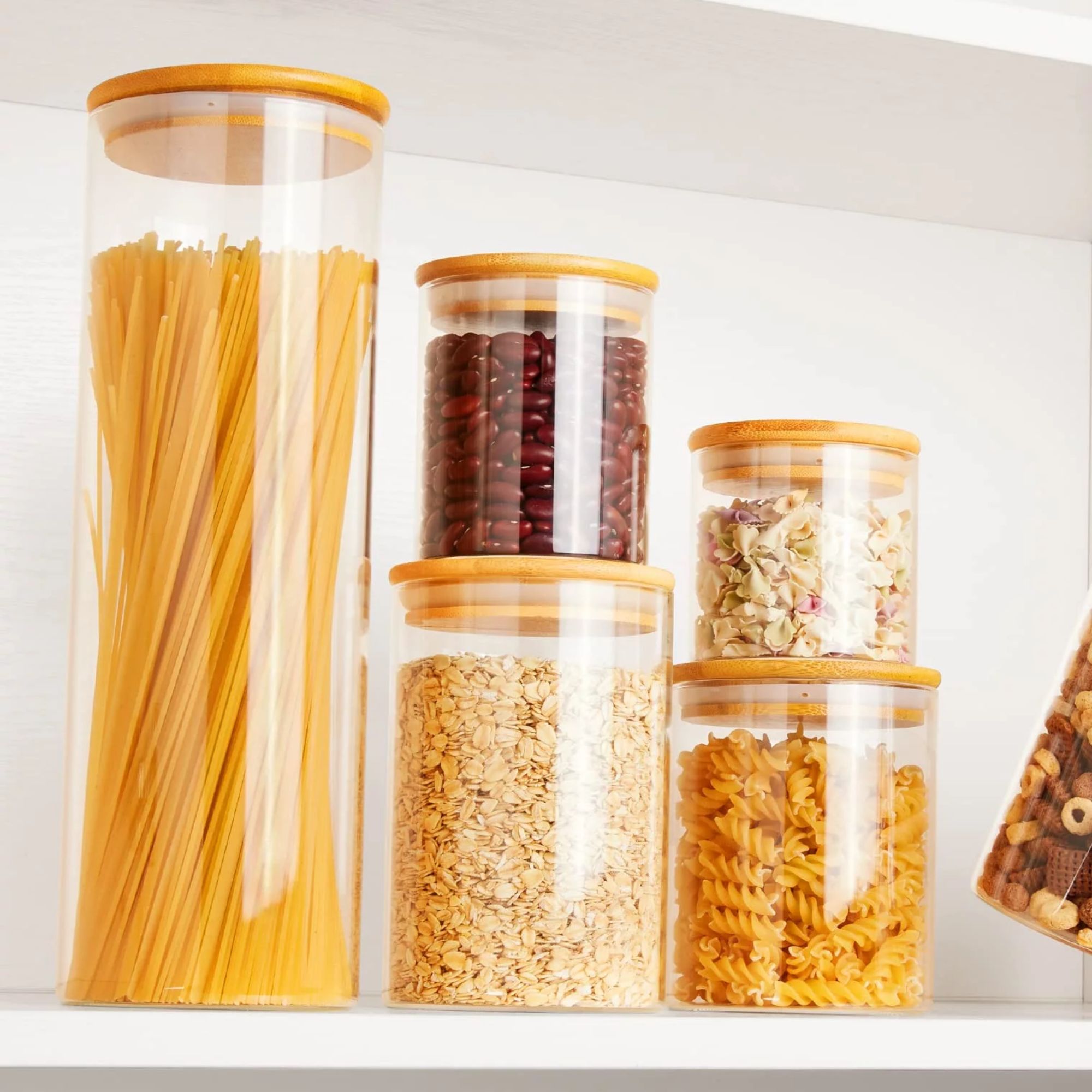These 6 food storage ideas can help you reduce food waste
Using simple habits and food storage techniques can make it easier to preserve food, prevent items from going unused, and create a more sustainable kitchen


Finding ways to reduce food waste is always a priority – whether for sustainability or cost-saving reasons – and with the right food storage strategies, you can significantly reduce the amount of food that goes uneaten in your home.
Simply being more conscientious about the food storage systems and habits you implement, whether in your pantry, refrigerator, or freezer, you can ensure your food lasts longer and your behaviors prevent food waste. From keeping an inventory of your items to choosing containers that preserve freshness, these simple ideas can make a big difference.
Alongside simple storage tricks that will extend the life of your groceries, by using these six kitchen storage ideas and organization techniques, you'll not only enjoy a more organized space but also contribute to the reduction of food waste.
Food storage ideas to reduce food waste
Here's how to make a conscious effort with leftover food storage to maximize the use of our resources and create a more sustainable and efficient kitchen environment.
1. Rotating systems

It is important to rotate food in your pantry and refrigerator to ensure that you are consuming items before they expire, keeping your food fresh, and reducing waste.
'Embrace the first in, first out (FIFO) method by placing newly purchased or prepared items at the back of your pantry or refrigerator shelves,' recommends Sarah Johnson, kitchen expert at Big Air Fryers. 'This ensures that older items are used first, reducing the likelihood of items expiring before they are consumed.'
Of course, you can just store new food at the back and move it forward as you use older items, but to make the process easier, you can invest in refrigerator and pantry organizers that make it simple to identify and access older items that need to be used while keeping newer items stored at the back.
Design expertise in your inbox – from inspiring decorating ideas and beautiful celebrity homes to practical gardening advice and shopping round-ups.
A dispenser or lazy Susan can be used to keep the oldest item in your collection at the front, making it easy to rotate your stock and use items before they expire.
This is a great system for storing fall produce without plastic, too, to avoid waste.

Lazy susans can be labeled with the expiry date of items. This pantry organizer professionals always buy is a way you can access items with expiry dates that are sooner.
2. Labeling and transparent storage

Out of sight often means out of mind, which leads to waste. So, incorporating clear, labeled containers for leftovers ensures they're used promptly and prevents you from overstocking.
'Invest in a labeling system to keep track of expiration dates, especially for perishable items. Mark the date of purchase or expiration on containers and packages to make it easy for you to identify and use items before they go bad,' advises Sarah Johnson. We recommend using this NIIMBOT label maker, from Amazon.
George Yang, registered dietitian and Founder of Yanre Fitness, adds: 'Storing food in see-through containers can help you avoid overbuying, allowing you to easily check what you have and plan meals around what needs to be eaten first.'
Lerine 10 Pack Reusable Bags Silicone | $13.99, $11.47 at Amazon
3. Proper temperature management

It is essential to determine the correct temperature for food safety and preservation. Sarah Johnson advises: 'Regularly check and calibrate the settings to ensure your appliances are working efficiently to extend the shelf life of perishable items.'
For instance, it's essential to determine how cold your refrigerator should be to find the correct temperature for food safety and preservation.
Furthermore, you can organize a refrigerator strategically by utilizing different shelves and levels to store different foods that require varying temperatures. For example, the bottom shelf is the coldest zone, making it perfect for the most perishable foods such as raw meat. The top shelf, on the other hand, will be a couple of degrees Fahrenheit warmer and is for beverages and condiments.
To preserve food like potatoes, onions, and carrots that don't require refrigeration and thrive in cooler, dark environments, you can create dedicated storage spaces in your pantry. By mimicking the conditions of a root cellar, you can significantly extend its shelf life. This will help you keep these staples fresher for longer.
4. Choose the right storage containers

Choosing the right storage containers is essential for ensuring your food's longevity, as well as contributing to a more sustainable and waste-free kitchen.
Vacuum seal containers
'Opt for airtight containers to maintain the freshness of ingredients and prevent them from spoiling quickly,' says Sarah Johnson. 'Vacuum-sealed bags are also an excellent choice for preserving the quality of food items.'
These containers significantly extend the shelf life of food by removing air and reducing oxidation, which can speed up food decomposition.
Select the right materials
When it comes to selecting the right food storage containers, several factors can determine which will be the best choice based on your priorities. In addition to preserving food, it's important to take into account safety, durability, cost-effectiveness, and environmental impact.
Research has shown that some of the chemicals in plastic can contaminate the food and drink we consume. Containers made from durable materials such as glass, steel, or BPA-free plastic are less likely to degrade over time and contaminate food, making them ideal choices. The more durable and high-quality food storage containers are, the better-preserved food will be.
Additionally, in a zero-waste kitchen, Silicone Food Huggers are a must-have. 'These are a fantastic alternative to plastic cling wrap when it comes to securing cans and certain fruits and vegetables. They are infinitely reusable, and they help you save a significant amount of money compared to single-use alternatives in the long run,' explains George Yang.
Another alternative to foil or cling film is beeswax wraps. Made of organic cotton, beeswax, jojoba oil, and tree resin, they are a more environmentally friendly option. They can be used to wrap most foods except raw meat and fish, and they allow food to breathe more easily than cling film, keeping it fresher for longer.
5. Keep an inventory

'Keep a running inventory of items in your pantry, refrigerator, and freezer to prevent buried treasures from getting lost and forgotten,' advises Sarah Johnson. 'Regularly check and update your lists to ensure that nothing gets overlooked or expires.'
We recommend using a magnetic refrigerator board, such as these, from Amazon, to keep a visual queue of what you have. This will also allow you to make notes about the expiry dates of certain items, so no food goes to waste.
'You can also plan your meals ahead of time, taking inventory of what you already have,' recommends Sarah Johnson. 'This prevents overbuying and ensures that you use up perishable items before they go bad.'
Additionally, systematic organization can help you keep an inventory, making it easy to identify which items in each category you have. Divide your refrigerator and pantry into sections based on categories like fruits, vegetables, dairy, and meats.
6. Digital integration: Smart apps for food management

Integrating technology with food storage through the use of smart apps can significantly reduce food waste. These apps can alert you when products are nearing their expiration, suggest shopping lists and recipes based on what you have, and even remind you to consume items you might have forgotten about.
As well as using smart storage ideas and techniques that retain the longevity of your food, and keep track of items to avoid overstocking, you can also use specific methods to extend the freshness of stored food. For example, for wilted greens, adding a tablespoon of sugar to water, cutting the stems about an inch from the bottom, and storing them with the stems in the sugar water can help to revive the greens.
A combination of these different methods can ensure you don't waste food, contributing to a more environmentally friendly and efficient home.

Lola Houlton is a news writer for Homes & Gardens. She has been writing content for Future PLC for the past six years, in particular Homes & Gardens, Real Homes and GardeningEtc. She writes on a broad range of subjects, including practical household advice, recipe articles, and product reviews, working closely with experts in their fields to cover everything from heating to home organization through to house plants. Lola is a graduate, who completed her degree in Psychology at the University of Sussex. She has also spent some time working at the BBC.





